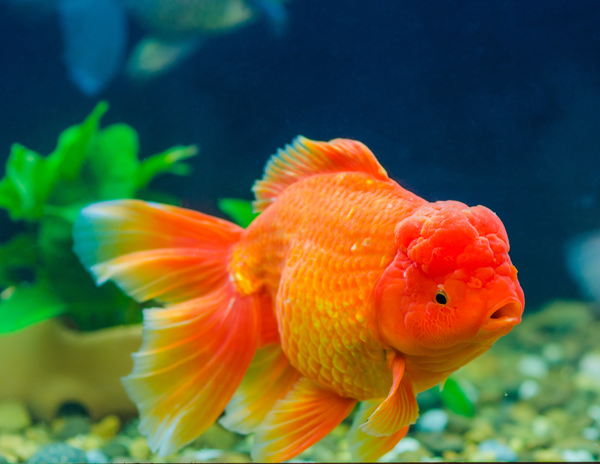We’re no strangers to harsh winters here in Alberta. While we spend a lot of the early fall season prepping our yards for the shift into cold, we need to be sure that includes our ponds as that will help set us up for success when it comes time to get everything running again.
The first and easiest thing to do when prepping your pond for winter is switching your fish food. Once water temperatures fall below 18°C (65°F) you want to switch over to a cold weather koi/goldfish diet. As water cools, your fishes’ metabolisms slow. Cold-water seasonal diets allow easier processing of food, and they also tend to contribute to feeding bacteria to make sure as much organic matter is broken down as possible. Once water temperature is consistently below 9°C (48°F), you’ll want to stop feeding your fish altogether because their metabolism has slowed to a point where they will very slowly digest food. Feeding during this period can lead to food staying in their digestive tract for excessive periods of time and cause fatal health issues.
Now that feeding has been tackled, let’s look at organic debris. The more organic debris we allow to stay in the pond, the worse the quality of water will become over winter, especially entering start-up season. You want to vacuum out as much excess organic debris as possible, trim up marginal plants, and remove any tropical plants and floating plants that will die in the cold and contribute to organics in the water. Another great thing to do is cover the pond with netting to catch any falling leaves from surrounding trees to make keeping the water clean easier for the remainder of the season.
Our next step is going to be adding beneficial bacteria. Typically, during pond season you can add most available bacterial supplements, but for winterization you’ll need to use specific strains of cold-water bacteria. These will continue to help break down organic matter that snuck its way in after cleaning, or that you were unable to get to during cleanup. They will help immensely in the maintenance of your water quality, especially if you’re able to overwinter your fish in the pond.
If you are able to overwinter your fish in your pond, you’ll want to be sure to add a pond de-icer. This will allow an area of the surface to stay open, giving an opportunity for much-needed gas exchange. You can use an aerator as well—the bubble agitation prevents freezing, and it has the added benefit of adding circulation and oxygenation. Here in Calgary, for a little more piece of mind, you’ll typically want to leave your fish in the pond only if the depth of your pond reaches below the frost line. Our frost line is anywhere from 4 to 6 feet deep on average, but this varies based on severity of winter conditions. Location can also be a factor in how deep your pond will freeze. So if you are planning to keep your fish in the pond over winter, be sure to know if it will freeze all the way through or if there will still be safe open waters for the fish.
Finally, you’ll want to shut down your filtration. Any canisters, external, or submersible styles should be removed, cleaned, and stored inside (this goes for UV sterilizers as well). If you have a waterfall style filter, you’ll want to drain the basins, remove and clean the media, and store it somewhere dry. While some people run fountains or waterfalls throughout the winter, it is not recommended as ice can build up and cause water to flow away from the pond and drain it over time. Also be sure to read the storage instructions for any pumps and devices that you use on your pond as some pond gear is recommended to be kept in water, whereas others should be kept dry for storage.
If you are bringing your fish in for the winter, be sure to do so while temperatures are still in the mid- upper teens. This allows for an easier transition into our climate-controlled homes as you won’t be taking the fish from extreme cold to warm conditions. You can also use media from your pond filters in the filtration for the holding tanks you use. This allows the tanks to cycle faster and stay more stable with your fish in them, and you have some cycled media ready to go at the start of pond season.
Whether you’re bringing your fish in for the winter or letting them stay in the familiar pond they’ve spent the spring and summer inhabiting, you’ll want to be sure you shut things down right. Properly winterizing your pond not only allows for success throughout the winter, but it also makes start-up in the spring a much easier process. In addition, it can prevent you needing to purchase any new pond equipment should the freezing weather damage the equipment from a lack of proper winterization.




